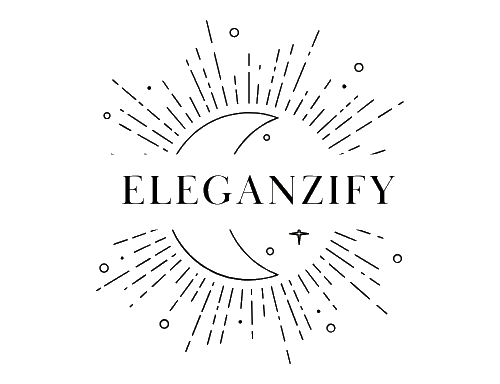The suit, once a symbol of male corporate dominance, has undergone a remarkable transformation over the past century. What was once exclusively a male garment has become a powerful statement of professional achievement, personal style, and gender equality for women. The journey of women in suits is a nuanced narrative of social change, personal empowerment, and breaking through traditional gender barriers.
Historical Context: From Rebellion to Acceptance
The history of women wearing suits is deeply intertwined with the broader struggle for women’s rights and professional recognition. In the late 19th and early 20th centuries, women who dared to wear traditionally masculine clothing were considered radical. Pioneers like Amelia Earhart and Marlene Dietrich challenged societal norms by adopting tailored suits, symbolizing their independence and rejection of restrictive feminine dress codes.
The 1920s and 1930s saw early iterations of women’s suits, though they were often still heavily feminized. Coco Chanel was instrumental in this transition, introducing women’s suits that were both elegant and practical. Her iconic tweed suits became a symbol of sophisticated professional attire, challenging the notion that women’s clothing must be purely decorative.
The Corporate Revolution: Power Dressing in the 1980s
The 1980s marked a significant turning point for women in suits. As more women entered corporate environments, the power suit became a crucial tool of professional identity. Designers like Donna Karan created suits specifically designed for women’s bodies, featuring padded shoulders, tailored waists, and a bold silhouette that communicated confidence and authority.
Television shows and movies of the era, such as “Working Girl” and “Wall Street,” further popularized the image of women in suits as successful professionals. The suit became a uniform of empowerment, signaling that women could compete equally in male-dominated professional spaces.
Contemporary Perspectives: Diversity and Personal Expression
Today, women’s suits have evolved far beyond their original corporate constraints. They represent a spectrum of personal and professional expression that transcends traditional gender boundaries. Contemporary designers and fashion houses have embraced diverse interpretations of the suit, offering styles that range from strictly tailored to deliberately oversized, from classic neutral tones to bold, vibrant colors.
Professional Impact
In professional environments, suits continue to be a powerful tool for women. They communicate:
- Competence and professionalism
- Confidence and self-assurance
- Respect for the workplace environment
- Personal style and individuality
Importantly, modern suit culture recognizes that there’s no single “right” way to wear a suit. Women are now free to customize their suits, mixing traditional tailoring with personal flair.
Cultural Significance Beyond the Workplace
Suits for women have transcended professional spaces, becoming a statement of personal identity in various contexts:
Entertainment and Arts
Numerous celebrities and performers have embraced suits as a form of personal expression:
- Janelle Monáe’s consistently sharp, androgynous suit aesthetic
- Ellen DeGeneres’s casual yet elegant suit style
- Tuxedo-clad performers challenging gender presentation norms
LGBTQ+ representation
For many in the LGBTQ+ community, suits represent a powerful mode of gender expression, allowing individuals to explore and celebrate their identity beyond traditional clothing norms.
Psychological Dimensions of Suit-Wearing
Wearing a suit can have profound psychological effects for women:
- Increased feelings of confidence
- A sense of professional preparedness
- Breaking internalized gender stereotypes
- Challenging traditional expectations of feminine dress
Suit Styles for Different Body Types and Preferences
Modern suit design recognizes the diversity of women’s bodies and personal styles:
- Slim-fit suits for a sleek, contemporary look
- Relaxed, oversized suits for a more casual approach
- Double-breasted styles for a classic, authoritative appearance
- Cropped and tailored options for petite frames
- Extended sizing to ensure inclusivity
Sustainability and Ethical Considerations
The contemporary suit market is increasingly conscious of sustainability:
- Brands offering suits made from recycled materials
- Ethical manufacturing practices
- Timeless designs that transcend seasonal trends
- Higher-quality suits that last longer and reduce fashion waste
Challenges and Ongoing Conversations
Despite significant progress, women still face challenges in suit-wearing:
- Persistent workplace dress code biases
- Continued gender stereotyping
- Cost barriers to high-quality professional attire
- Balancing personal style with professional expectations
The Future of Women in Suits
Looking forward, the trajectory for women’s suits seems increasingly inclusive and diverse. We can expect:
- More gender-neutral design approaches
- Greater size and style inclusivity
- Continued breaking down of traditional gender fashion barriers
- Technological innovations in suit design and materials
Conclusion
The story of women in suits is fundamentally a story of empowerment. From early rebellious acts of wearing traditionally male clothing to today’s diverse and inclusive suit culture, these garments represent much more than fabric and tailoring. They symbolize progress, personal expression, and the ongoing journey towards gender equality.
Suits for women are no longer about mimicking male professional dress but about creating a unique, powerful form of self-expression that celebrates individual identity while commanding respect.




